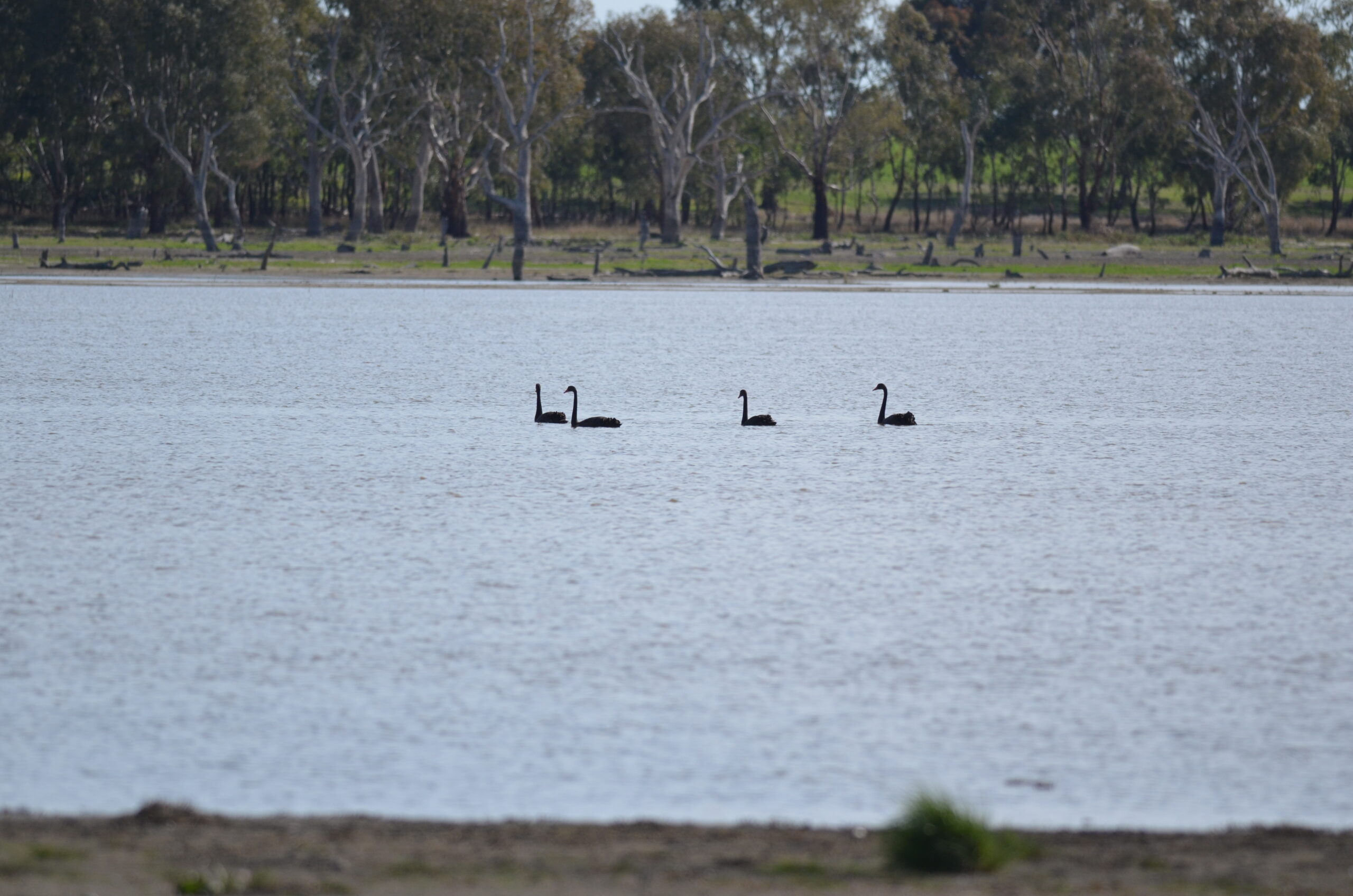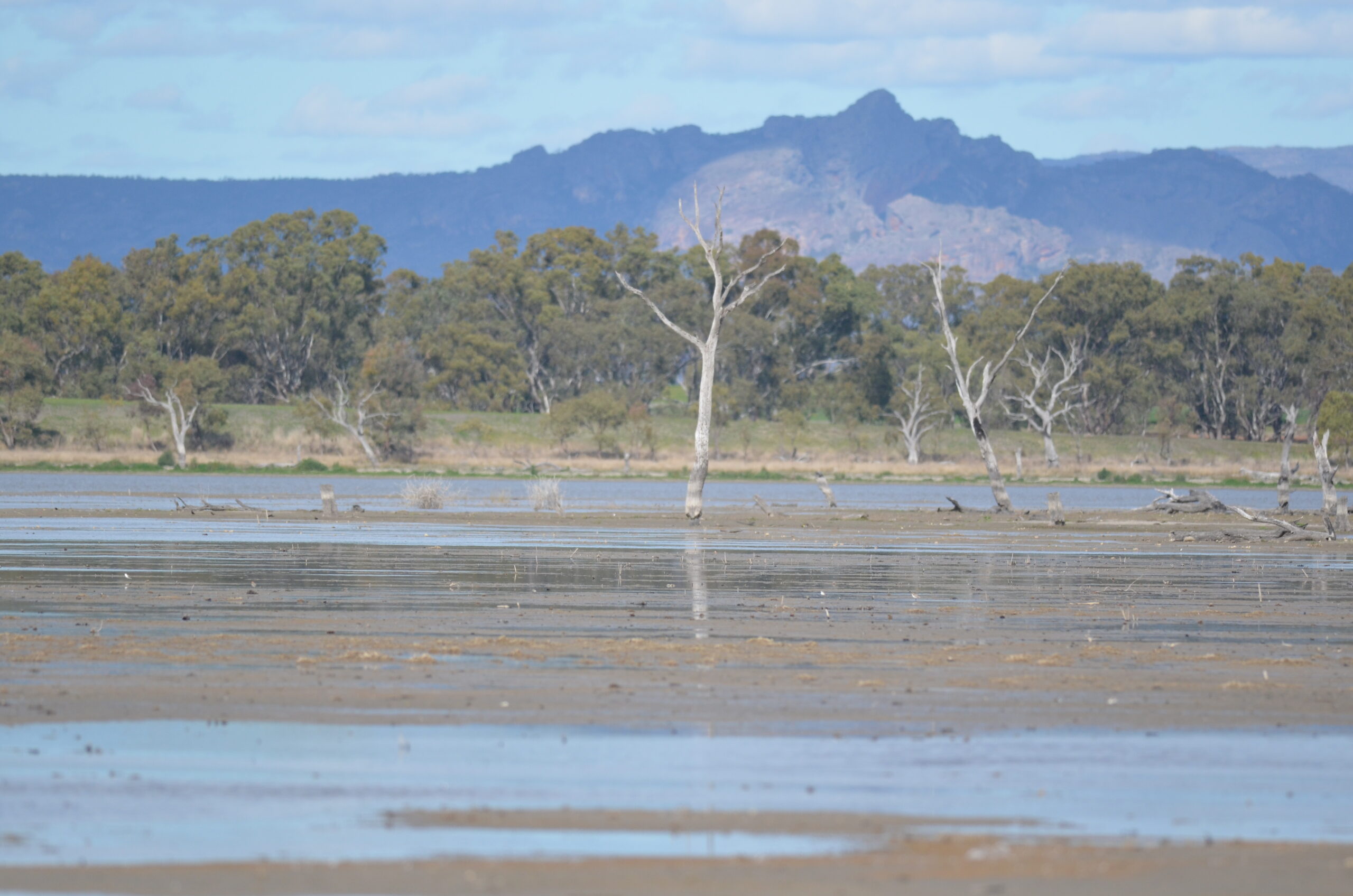Seasonal Visitors and Shoreline Dwellers: August at Dock Lake
Dock Lake August 2025 Bird Survey

Four Black Swans at Dock Lake seen from Site 4
📸 Jonathon Starks
Date: 21 August 2025
Overview
As Dock Lake continues to shrink under persistent dry conditions, the August 2025 survey reveals a wetland adapting to its changing landscape. Water levels remain low, with the lake edge now distant from the treed perimeter—especially on the western and northern sides. Despite this, wetland birds were still observed at familiar survey sites, showcasing their resilience and adaptability.
Bird Populations
A total of 225 individual birds across 10 species were recorded during the August survey. This marks a slight decline from July’s count of 279 birds, and a more notable drop compared to August 2024’s 268 birds—likely due to higher water levels last year.
Key Observations:
- Red-capped Plovers were the most numerous species, with 87 individuals. Their preference for shoreline habitat makes Dock Lake ideal in its current state.
- Grey Teal remained abundant, with 81 individuals, up from 46 in August 2024 but down from summer highs exceeding 1,000.
- Red-necked Stints, a migratory species from the northern hemisphere, were observed overwintering—11 individuals in total.
- Australasian Shovelers and Black Swans were present in small numbers (4 each).
- Masked Lapwings were evenly distributed across sites, with 8 individuals.
- Common Froglets were heard calling at Site 1, despite no surface water.
Survey Highlights
- Shorebird Dominance: The rise in Red-capped Plovers and Red-necked Stints reflects the lake’s transformation into a shorebird haven.
- Seasonal Shifts: The absence of Australasian Coots, once dominant in August 2024, highlights the impact of declining water levels. The last coot sighting was in February 2025.
- Frog Activity: Froglets calling from dry vegetation suggest ecological responses to microclimatic changes (recent rains creating damp microhabitats).

A few Red-capped Plovers on mudflats at Dock Lake, with a view across the lake and the Grampians behind
📸 Jonathon Starks
Summary Table
| SITE | 1 | 2 | 3 | 4 | 5 | 6 | TOTAL |
| Australasian Shoveler | 4 | 4 | |||||
| Black Swan | 4 | 4 | |||||
| Black-fronted Dotterel | 2 | 2 | |||||
| Grey Teal | 24 | 57 | 81 | ||||
| Masked Lapwing | 2 | 2 | 2 | 2 | 8 | ||
| Pacific Black Duck | 2 | 2 | |||||
| Red-capped Plover | 59 | 28 | 87 | ||||
| Red-necked Stint | 10 | 1 | 11 | ||||
| Silver Gull | 25 | 25 | |||||
| White-faced Heron | 1 | 1 | |||||
| Common Froglet | Y | ||||||
| TOTAL | 96 | – | 33 | 63 | 33 | 225 |
Conclusion
August’s survey at Dock Lake reflects a wetland in transition. While overall bird numbers are down, the diversity and presence of migratory species underscore the lake’s continued ecological importance. As spring approaches, ongoing monitoring will be essential to track how these changes affect both resident and visiting bird populations.
**Strict hygiene measures are in place to prevent contamination**




